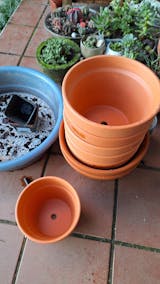
Muscari, from edible delicacy to river of dreams
Every year over 800 000 visitors descend upon Keukenhof Park, just outside the city of Lisse in the Netherlands, during its two-month opening during the spring season. The garden is a rainbow reverie of multi-coloured delight, with around four-and-a-half-million tulips and some three-million other bulbs covering its 32 hectares. Walking along the 15km of pathways of this spectacular petal-bursting showcase is enough to leave you speechless. But it’s the Blue River that may just leave you breathless. And then, when your breath returns, you’ll be transfixed by the musky scent of the vision laid out before you. The Blue River, one of Keukenhof’s most photographed bulb formations, is a sea of purply blue Muscari armeniacum – the source of the enveloping aroma – with red tulips and yellow daffodils coasting along its make-believe shoreline in a vivid clash of colour. Thanks to the rampant growth of Muscari armeniacum, this section of the garden seems to become more and more exquisite as the years go by.
Muscari armeniacum is but one of around 30 species of Muscari. Known as the grape hyacinth for its upside-down bunch-of-grapes appearance, it usually appears as a small, deep-blue, urn-shaped flower, although it can present itself in anything from mauve to white too. The Muscari latifolium, for example, is both light and dark blue. This two-toned plant displays hood-shaped broad leaves that can be up to three centimetres wide. In general, however, Muscari’s foliage is grasslike, narrow and fleshy, making it easy to rake through the plants to keep them looking manicured during their three- to four-week blooming season.
Another species, Muscari comosum (known as the tassel hyacinth), is an edible delicacy in the Puglia region of southern Italy, where the bitter bulb is eaten as a dish called lampascioni. The Mediterranean and South-West Asia are the original home of Muscari, so this culinary tradition dates back many years. Originally eaten by peasants who would forage for this free ingredient, they have become a sought-after dining experience for foodie travellers to this part of Italy. Visitors can expect these bulbs to be served in a myriad of ways – from baked to roasted or fried.
Muscari is an easy plant to have at home. This spring bloom, which grows in August and September, should be planted somewhere between March and May. It looks equally appealing in a brightly coloured pot, rock garden or in front of a flower bed that can benefit from its 20cm height. Find a spot with light shade or morning-only sun and make sure the soil is rich, well draining and sandy, with some compost added. Despite these guidelines, Muscari will continue to grow if placed in full sun (provided it receives sufficient water) or full shade, although this lack of sunlight may result in longer leaves. It can even withstand extreme cold of up to -20’C and so it is not averse to frosty areas.
When preparing the soil, loosen it to a depth of 20cm before placing the bulbs 3cm below ground level, about 5cm apart to allow for bulking up in the future. This plant is very rewarding in that it multiplies swiftly when the right soil is sought. Water your Muscari regularly for even more optimal results.


Leave a comment